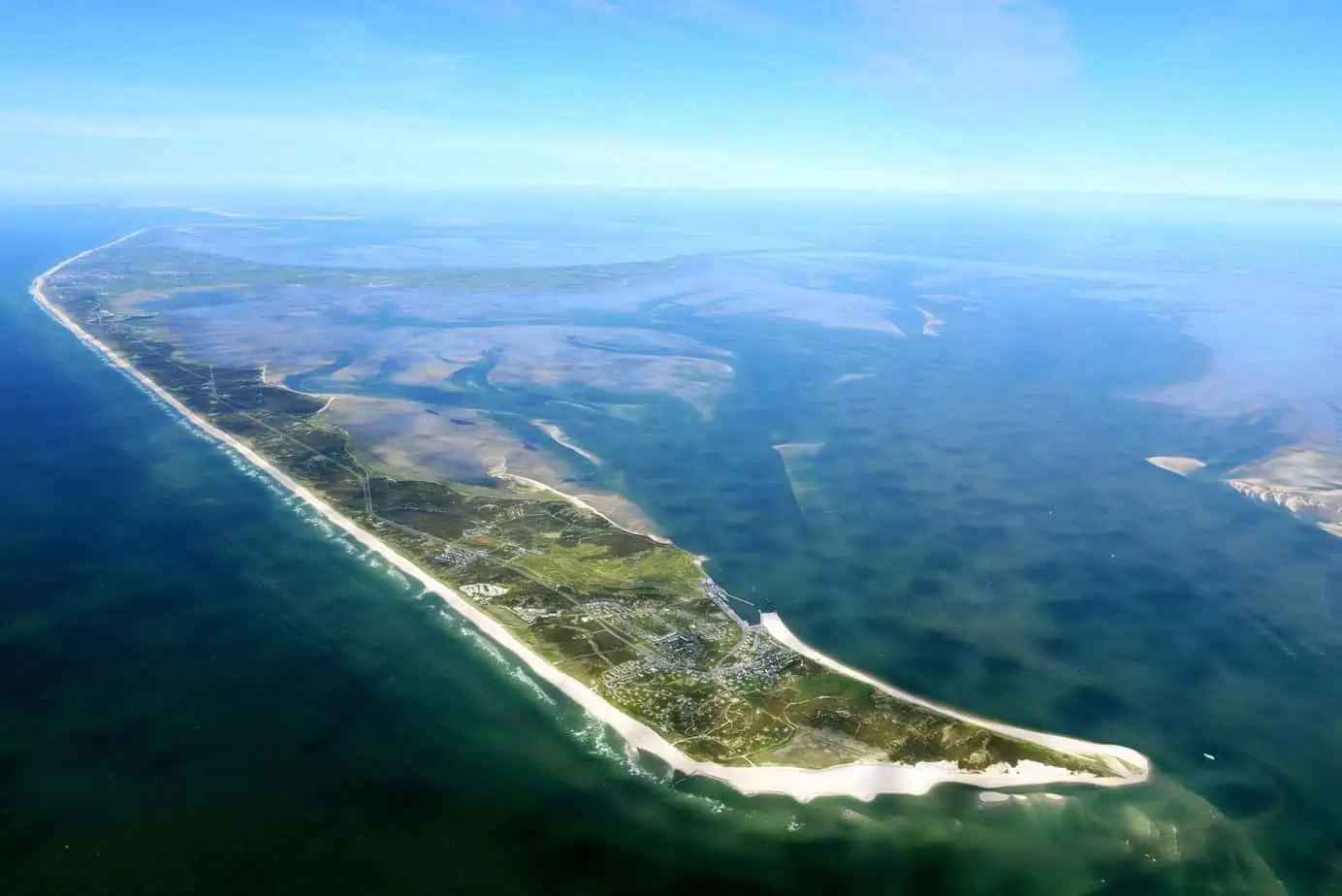Golf destination Sylt struggles with the mobility problem
If you stand at the 14th hole of the Budersand golf course on Sylt and look towards the North Sea, you will see the vastness in front of you: shaggy dunes, with the black-blue sea behind them. In November, you have to wait a long time for a walker to appear on the path to the viewpoint, strolling along the golf course. Now, in summer, there are plenty of walkers and one suspects: Just like all the golfers who are just doing their rounds, they too have driven up here via Rantumer Straße. There is no other way. The one road alone leads to the tip of the island.
150,000 tourists daily in summer
“That can get very crowded in the summer then,” says Christian Matthiesen, marketing expert, about this access road to the golf course, which is the only connecting road to the center of the island. He knows the route so well because Resort Budersand is one of his clients. It is exactly 21.6 kilometers from GC Budersand to GC Sylt near Wenningstedt. Normal travel time according to Google Maps 26 minutes. Now in high summer, when it feels like half of Germany is here, it can take over an hour.
Sylt has so many meanings. According to the cover story just published in Der Spiegel magazine, for example, “the sandcastle of the super-rich.” Then Sylt is “myth”. “Sylt is like a general store,” says Moritz Luft, managing director of Sylt Marketing GmbH. “And that’s why I can’t tell you for sure if people are coming to bike first and then golf, or if they’re just golfing.” One thing is certain: For some time now – especially since the beginning of the Corona crisis – Sylt has also been considered a golf destination, because there are four 18-hole golf courses on the 99.14 km² island.
Golf courses preserve the landscape
Sylt’s residents, Luft says, have come to realize that these same golf courses play a significant part in preserving the ecology and landscape. Budersand, where before the golf course there was a barracks area and today dune landscapes between the golf courses characterize the picture, has allowed this realization to mature in recent years, because the barracks image is still relatively present to so many Sylt residents.
Elsewhere, the golf destination of Sylt is struggling with exactly the same problem that affects other tourism segments of Sylt: “Traffic is getting worse and worse,” says Roland Grüger, who is from the island, lived away from here for a while and then returned home. Now involved with the Marine Golf Club, he takes one look at the parking lot, which is a really short walk from the clubhouse, and says, “A lot of people complain that it’s such a long walk. Many guests to the island, he realized, ideally wanted to drive their cars to the front of the first tee.
The golfer and the mobility problem
“The golfers,” Luft says, “are a small group, but they are a solid anchor in the guest segment.” However, they are firmly intertwined with the mobility problem that threatens to choke the island on summer vacation days. The number of cars rolling onto the island on the loading trains has been growing steadily for years. Also because, according to Christian Matthiesen’s observation, more and more family members are each driving separate cars in order to remain flexible on the island. “When a family of four comes to the island in three cars, it’s not unusual.”
Between Hörnum and Rantum, the much-vaunted flexibility on the two-lane road often turns into a single stop-and-go, but there is hardly any solution to the mobility problem. This is also because the golfer does not ride his bike to the club, does not sit on the bus with his trolley and bag, and is also unlikely to be a user of the new SyltRide app, which organizes ride pooling in which a driver picks up guests in a minibus for little money and drives them to their destination.
“We need to improve mobility on the island,” Luft therefore acknowledges, adding self-critically, “The demands are much higher than what we can manage in terms of improvements.” Digital transport solutions in particular are lagging behind, he said. I see other municipalities coping with this more agilely than Sylt does.”
Overtourism is discussed
The natural environment of Sylt, which is also represented by the four golf courses on the island, has its load limits. The discussion about so-called overtourism has gained new momentum with the Corona crisis on the island. First, because during the lockdown, the island’s residents had the opportunity to enjoy these same natural areas again for themselves. On the other hand, because Sylt as a model region was one of the first destinations to open up to tourists again and was subsequently overrun until the winter of 2021. Up to 150,000 tourists a day can be found at peak times on the island, which is home to some 18,000 residents.
Observe resources like water
“We also need to think about our resources and how we’re using them,” Luft muses. “For example, our freshwater lens is not yet a problem for the water supply, but we need to keep an eye on it.” SMG is currently working on a sustainable umbrella brand under which it intends to bundle products and services.
Golf, Luft notes, could well be a participant here. This is because the Marine GC, the GC Sylt and the GC Budersand all hold the Golf & Nature certificate of the German Golf Association. “There is, after all, a recognizable standard being set.” However, the mobility problem has not been solved there either. Sylt itself must find a solution for this.








